SIX SIGMA GREEN BELT
Software Minitab V.21
Minitab offers a wide range of statistical tools and data analysis capabilities, making it popular in various industries such as manufacturing, healthcare, finance, and academia. Some of its key features include hypothesis testing, regression analysis, control charts, design of experiments (DOE), reliability analysis, and statistical process control (SPC) tools. The software is known for its user-friendly interface, making it accessible to both beginners and advanced statisticians.
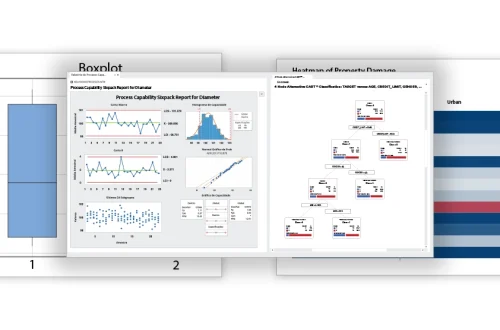
Key principles and objectives of Software Minitab V.21:
- Healthcare Module:Includes the information about the Healthcare Module, which uses common key process indicators (KPIs) in Healthcare Industry
- Supply Chain Module:Includes the information about the Supply Chain Module Module, which uses common key process indicators (KPIs) in Supply Chain Industry
- Customer Contact Center Module:Includes the information about the Customer Contact Center Module, which uses common key process indicators (KPIs) in Customer Contact Center Industry
- Measurement System Analysis Module: Includes the information about the Measurement System Analysis Module, which helps you to select the Measurement System Analysis that is the most appropriate for your data
SIX SIGMA METHODOLOGY

DMAIC

LEAN

DFSS
DMAIC
DMAIC is a structured problem-solving methodology used in Lean Six Sigma to improve processes and achieve quality and efficiency improvements. It stands for Define, Measure, Analyze, Improve, and Control, representing the five phases of the DMAIC process. Each phase involves specific activities and tools to guide the improvement project.
DMAIC is a core methodology used in Six Sigma, a data-driven approach to process improvement and problem-solving.
DMAIC is a structured problem-solving methodology used in Lean Six Sigma to improve processes and achieve quality and efficiency improvements.
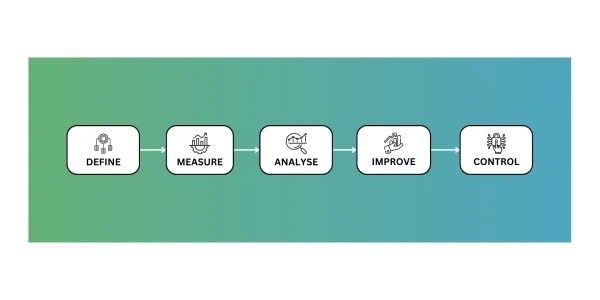
It stands for Define, Measure, Analyze, Improve, and Control, representing the five phases of the DMAIC process. Each phase involves specific activities and tools to guide the improvement project.
DMAIC is a core methodology used in Six Sigma, a data-driven approach to process improvement and problem-solving.
FLOWCHART FOR DMAIC :
- Define: In this phase, the problem is defined, and project goals and objectives are established. It includes identifying the process to be improved, understanding the customer requirements, and defining the scope and boundaries of the project.
- Measure: In this phase, relevant data is collected to assess the current performance of the process. Key performance indicators (KPIs) are identified, and data is analyzed to understand the process's current state and potential issues.
- Analyze: During the Analyze phase, the collected data is analyzed in-depth to identify root causes and sources of variation that lead to the identified problem. Various tools, such as root cause analysis, histograms, Pareto charts, and scatter plots, are used to gain insights into the process.
- Improve: The Improve phase focuses on implementing solutions and making necessary improvements to address the root causes identified in the previous phase. Innovative solutions are generated and tested, and potential changes are piloted to determine their effectiveness.
- Control: In the Control phase, the improved process is stabilized, and control mechanisms are put in place to ensure that the improvements are sustained over time. Statistical process control (SPC) techniques and monitoring systems are used to track performance and trigger corrective actions if necessary.
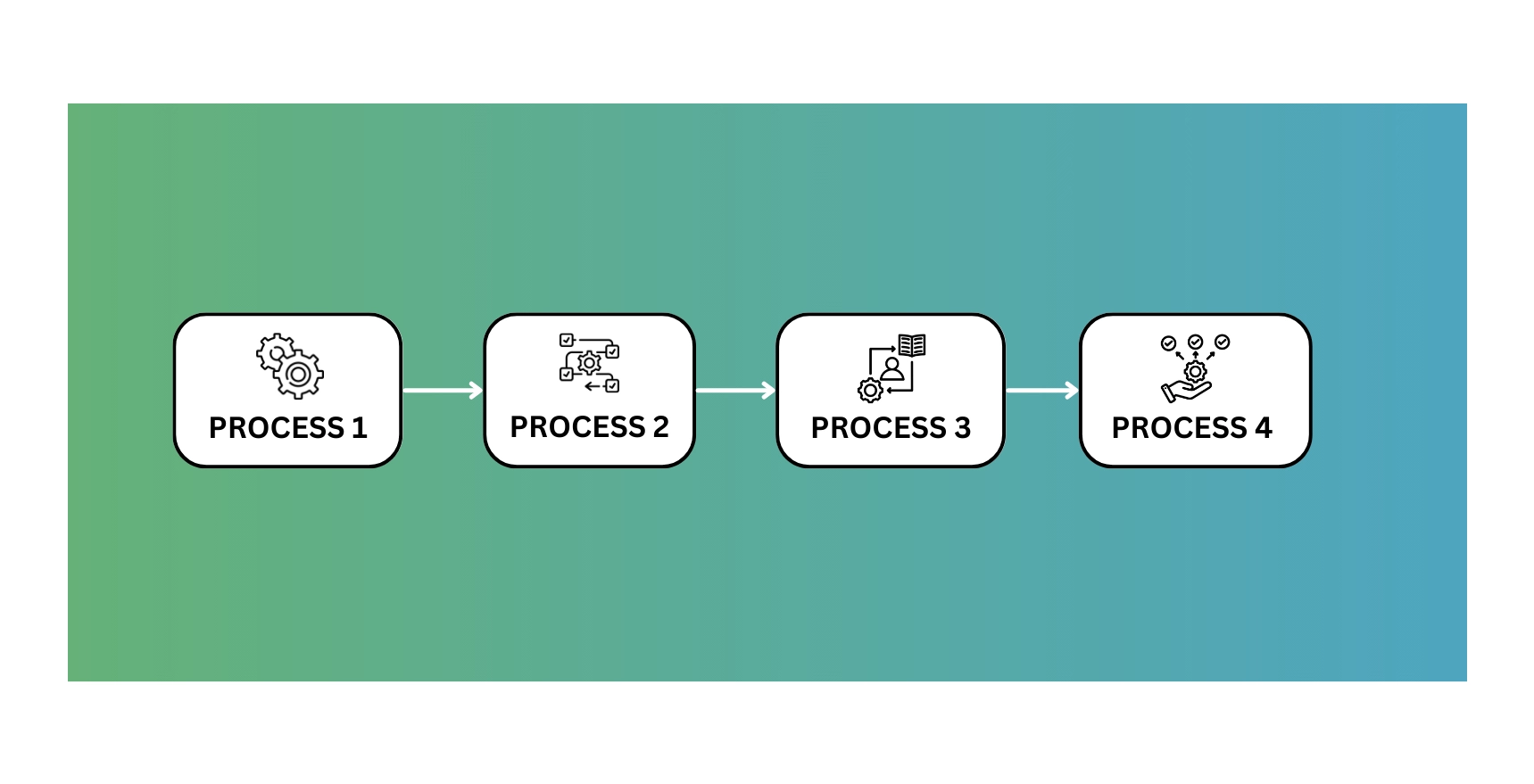
LEAN
Lean Six Sigma is a business improvement methodology that combines principles from Lean and Six Sigma to optimize processes, reduce waste, and improve overall efficiency and quality. Both Lean and Six Sigma are well-established methodologies, and when combined, they create a powerful approach to process improvement and problem-solving.
Lean Six Sigma is a business improvement methodology that combines principles from Lean and Six Sigma to optimize processes, reduce waste, and improve overall efficiency and quality.
Both Lean and Six Sigma are well-established methodologies, and when combined, they create a powerful approach to process improvement and problem-solving.

Identify Value Added Time (VAT) & Non Value Added Time (NVAT) for each Process
Total Value-Added Time = VAT1 + VAT2 + VAT3 + VAT4
Total Non-Value-Added Time = NVAT1 + NVAT2 + NVAT3 + NVAT4
Process Efficiency(Before Improvement)= Total Value Added Time/Total Time %
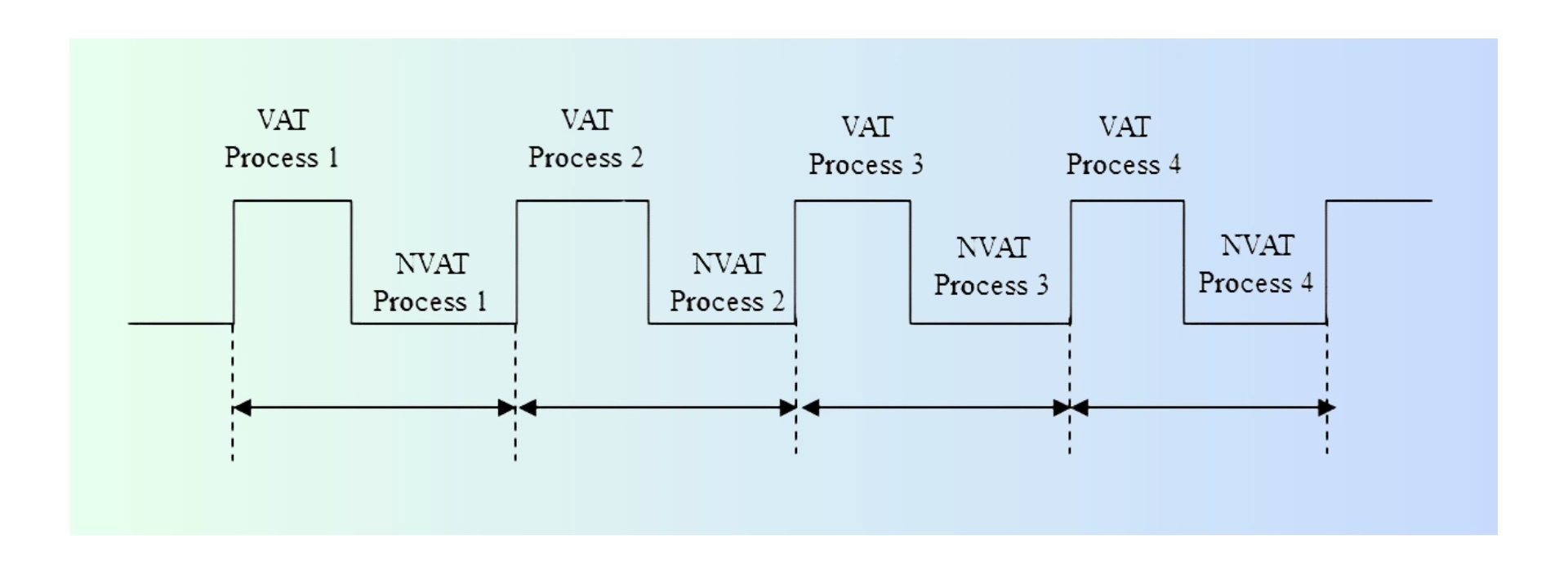
AFTER IMPROVEMENT:
- Identify Cause for Non-Value Added Times.
- Reduce or Eliminate Non-Value Added Time.
- Make Modified Process Flow & Diagram for VAT & NVAT.
- Calculate Process Efficiency (After Improvement).
DFSS
DFSS stands for Design for Six Sigma, a systematic approach used to design and develop new products, services, or processes with a focus on achieving Six Sigma levels of quality. It integrates various tools and methodologies from Six Sigma and other engineering disciplines to proactively ensure that the final output meets customer requirements and is highly robust and defect-free from the outset. DFSS aims to minimize variation, reduce defects, and enhance customer satisfaction by emphasizing the importance of thorough planning, analysis, and optimization during the design phase.
DFSS stands for Design for Six Sigma, a systematic approach used to design and develop new products, services, or processes with a focus on achieving Six Sigma levels of quality.
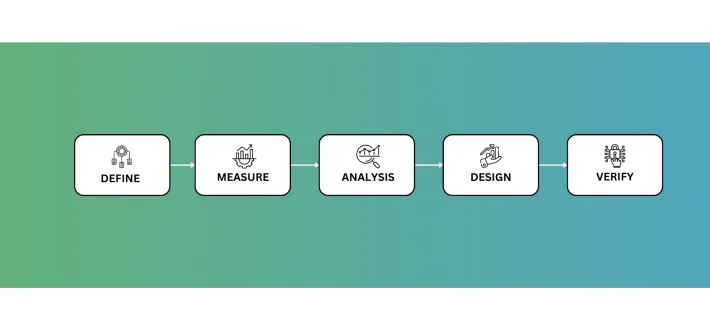
It integrates various tools and methodologies from Six Sigma and other engineering disciplines to proactively ensure that the final output meets customer requirements and is highly robust and defect-free from the outset. DFSS aims to minimize variation, reduce defects, and enhance customer satisfaction by emphasizing the importance of thorough planning, analysis, and optimization during the design phase.
Define
- Customer Requirements
- Draft Project Charter
Measure
- Quality Function Deployment
- Identify Critical to Quality
- Identify Evaluate Risk
- Design Score card
Analysis
- Design Alternatives
- Identify Best Alternative
- Detailed Design Requirements
Design
- Optimize Design Parameters
- Optimize Tolerance & Design Settings
- Design Verification Test Results
Verify
- Verify Product/ Process Performance Against Targets
- Operational & Control Documentations & Procedures Controls and Training is Complete
